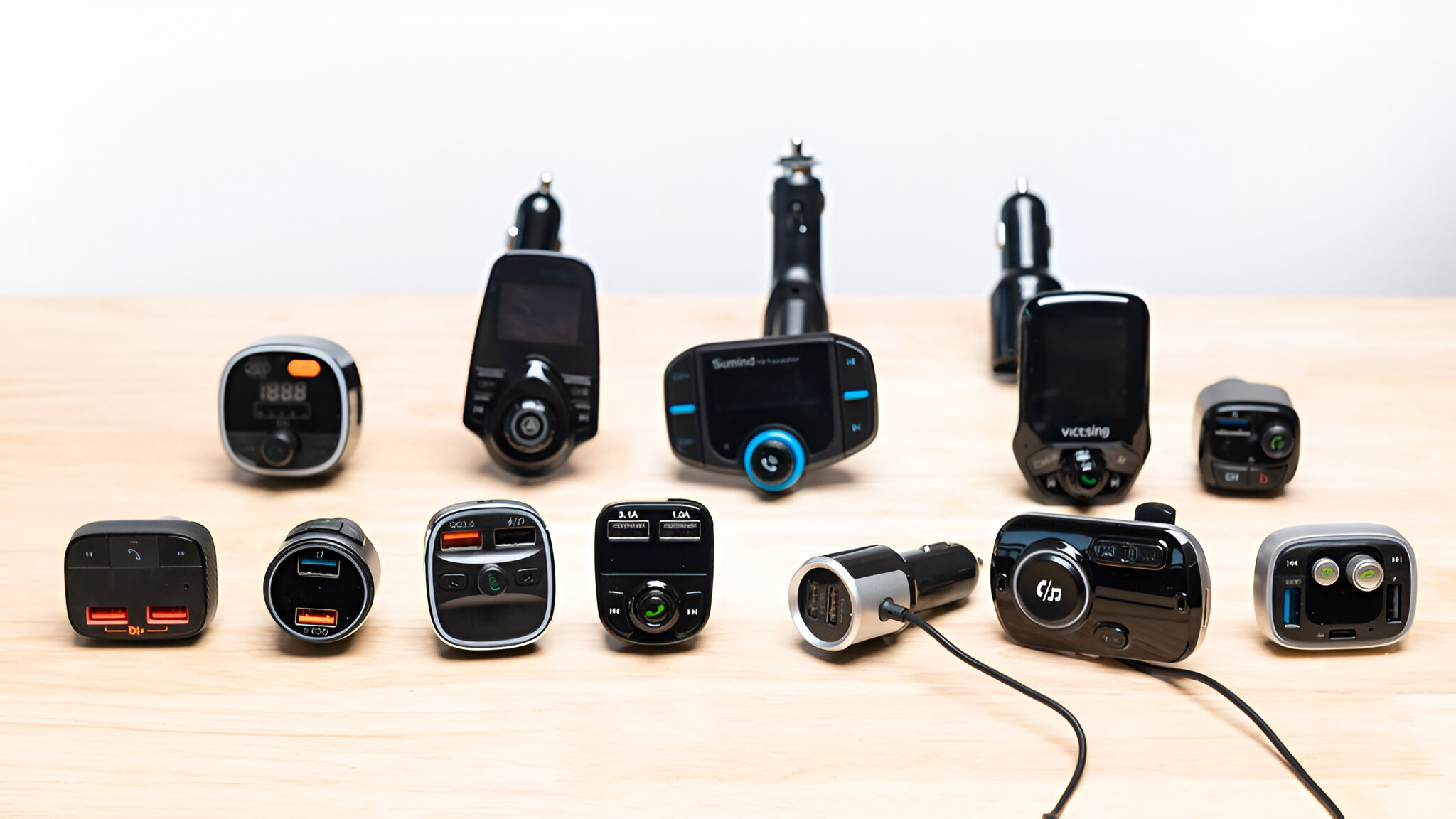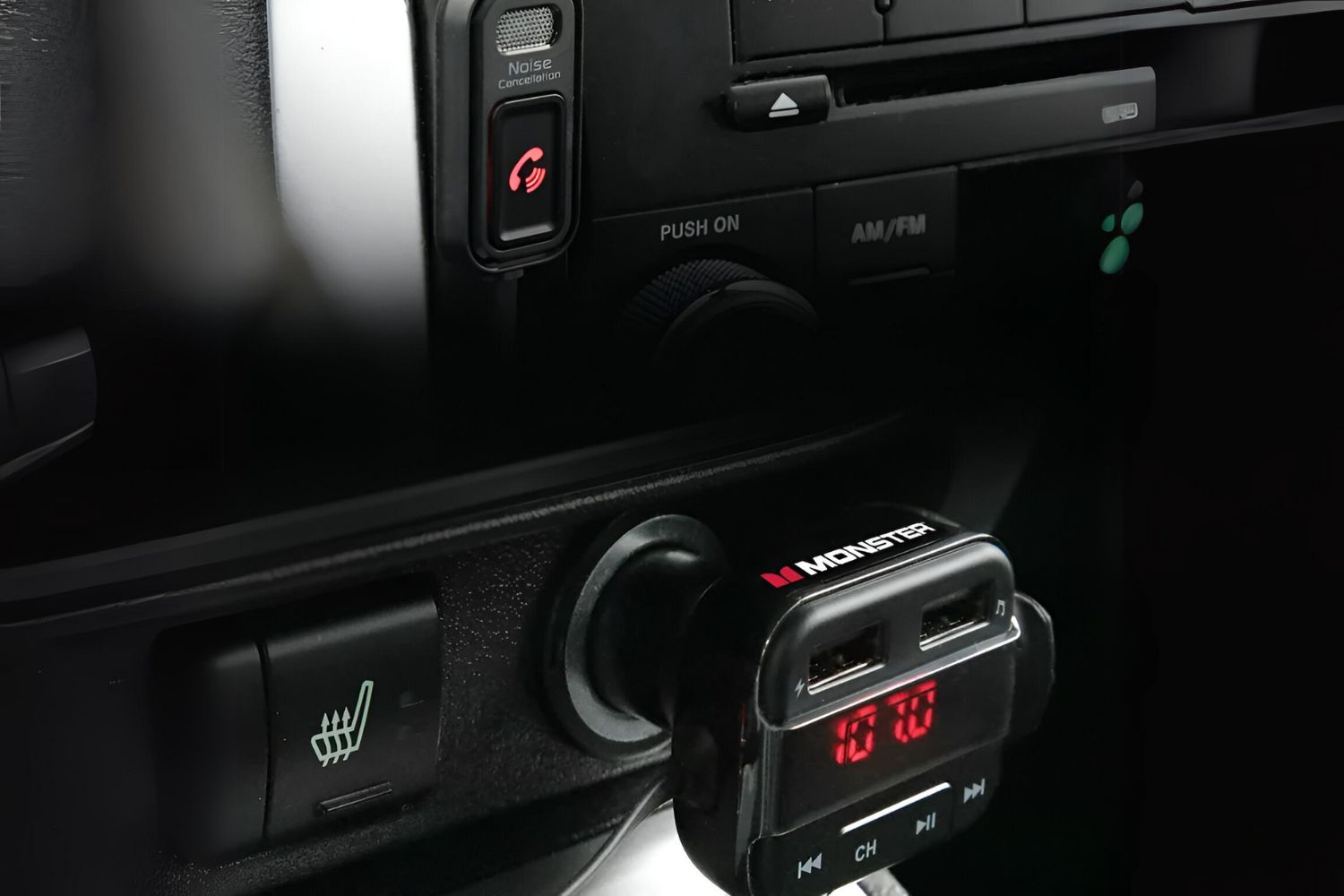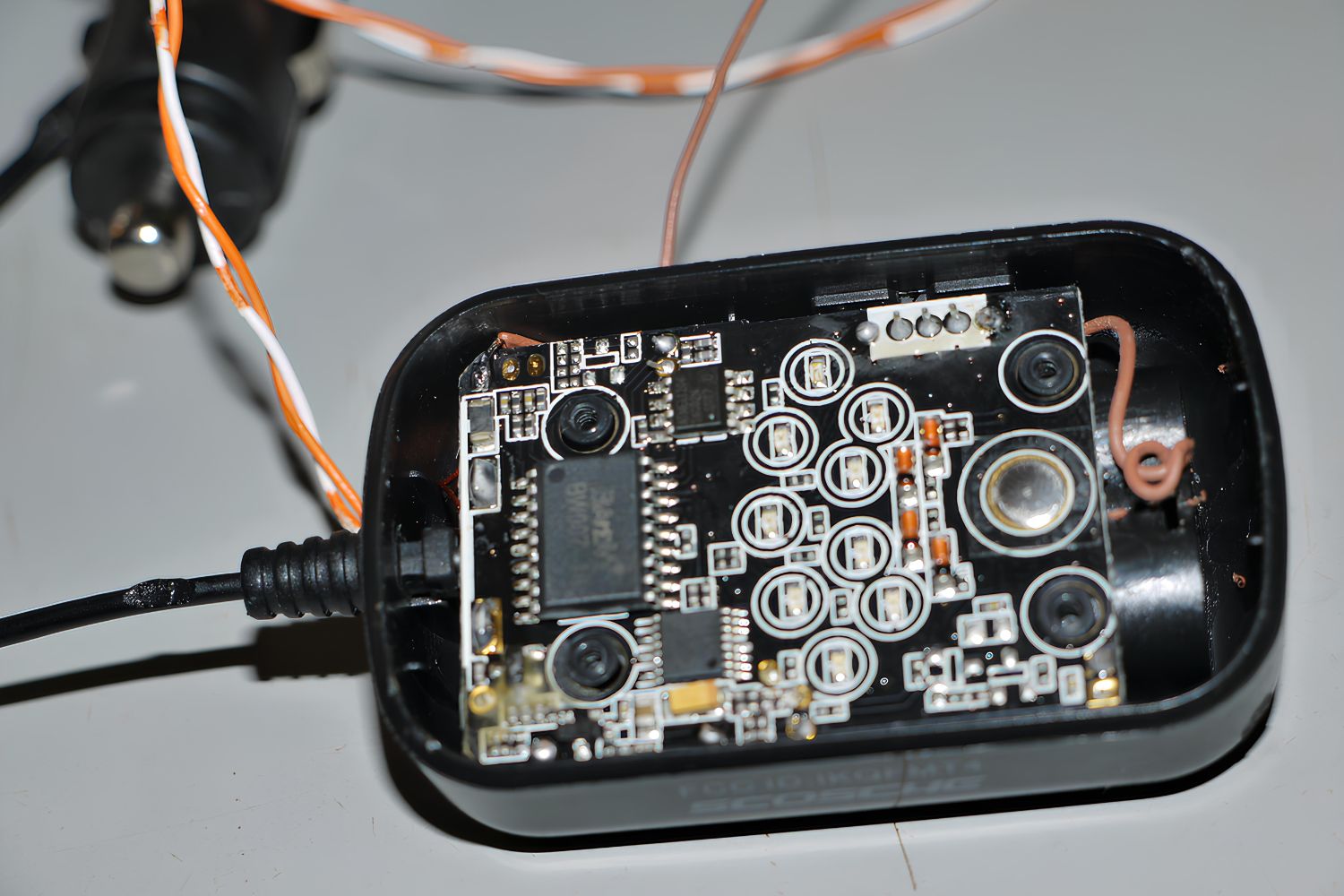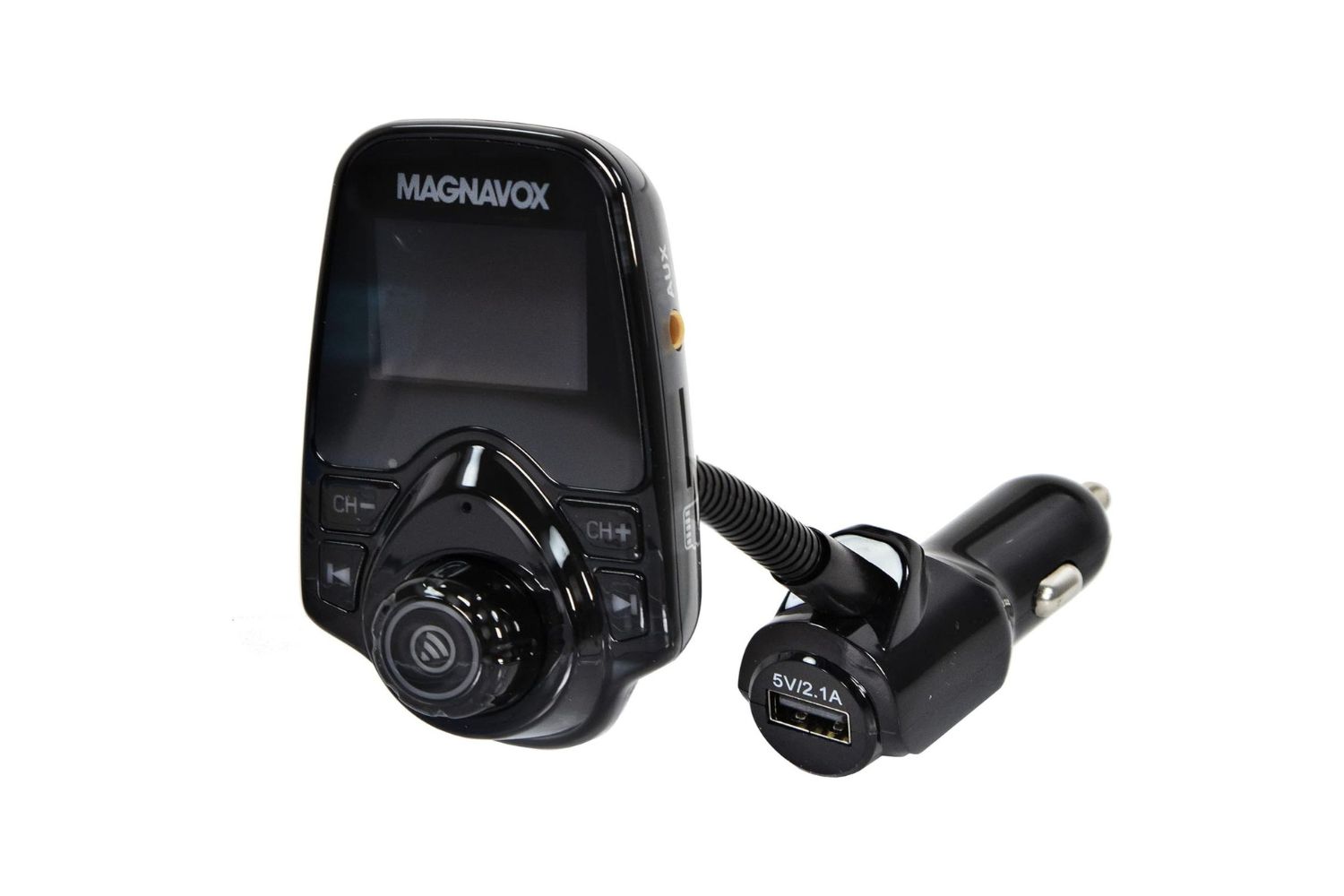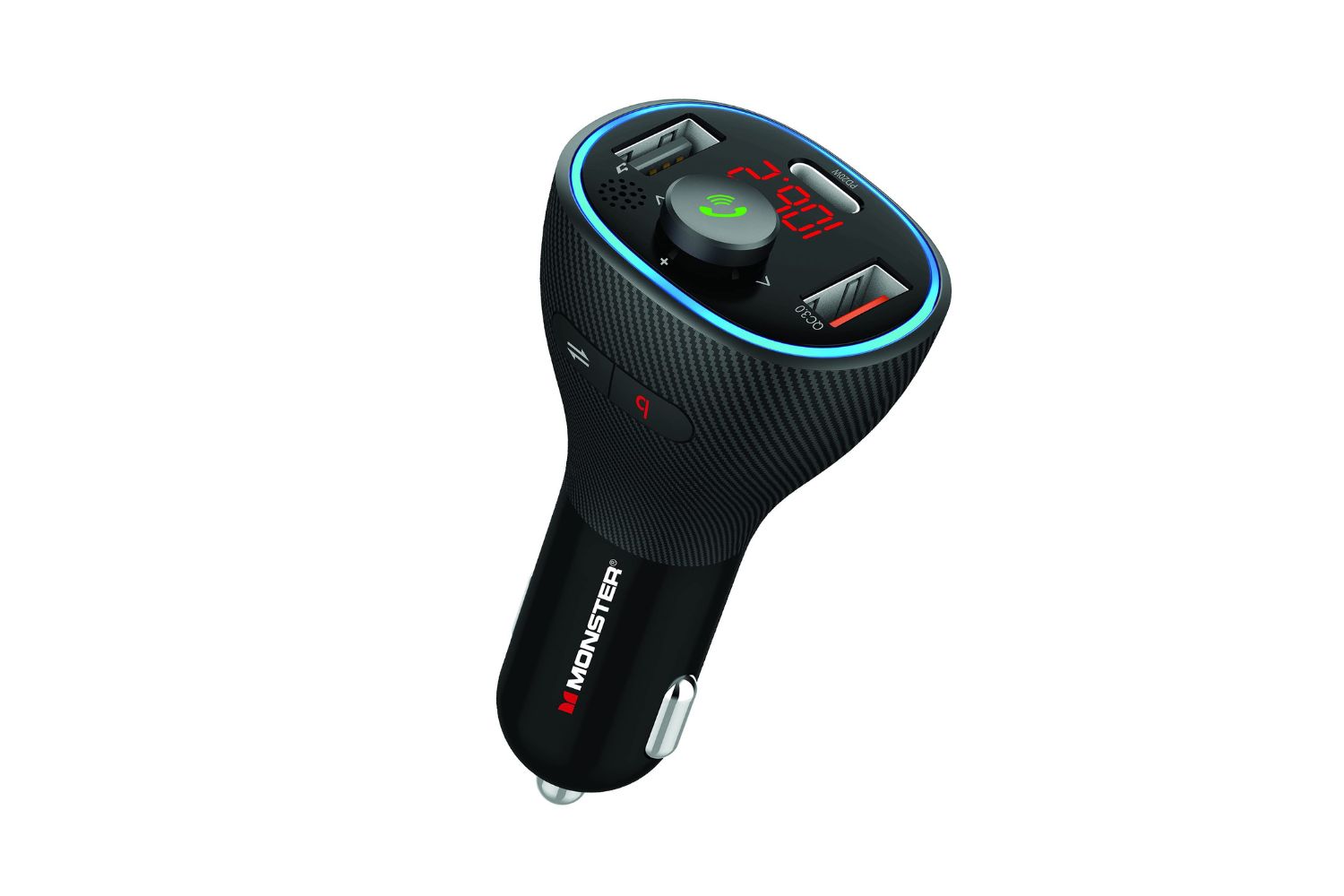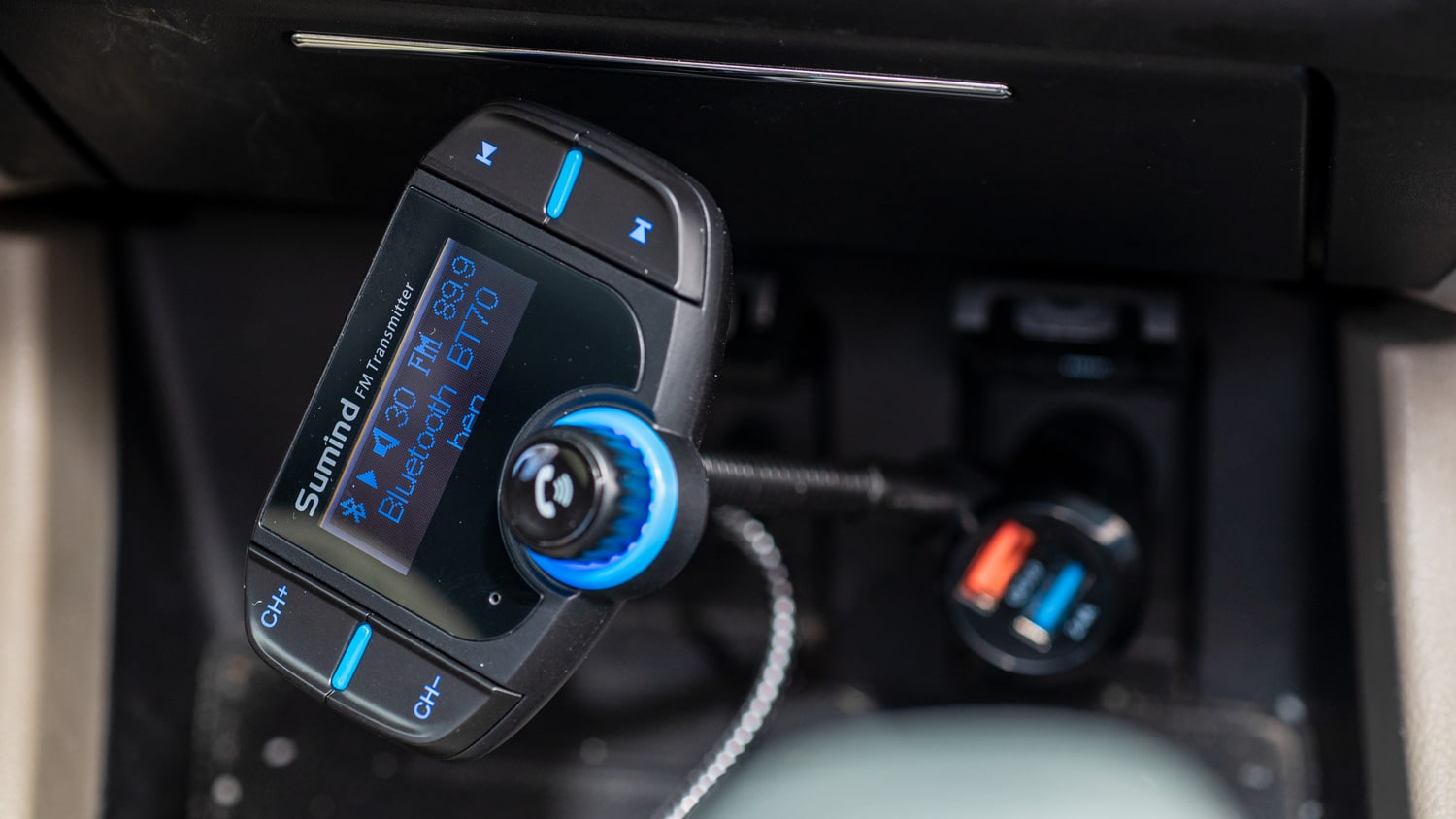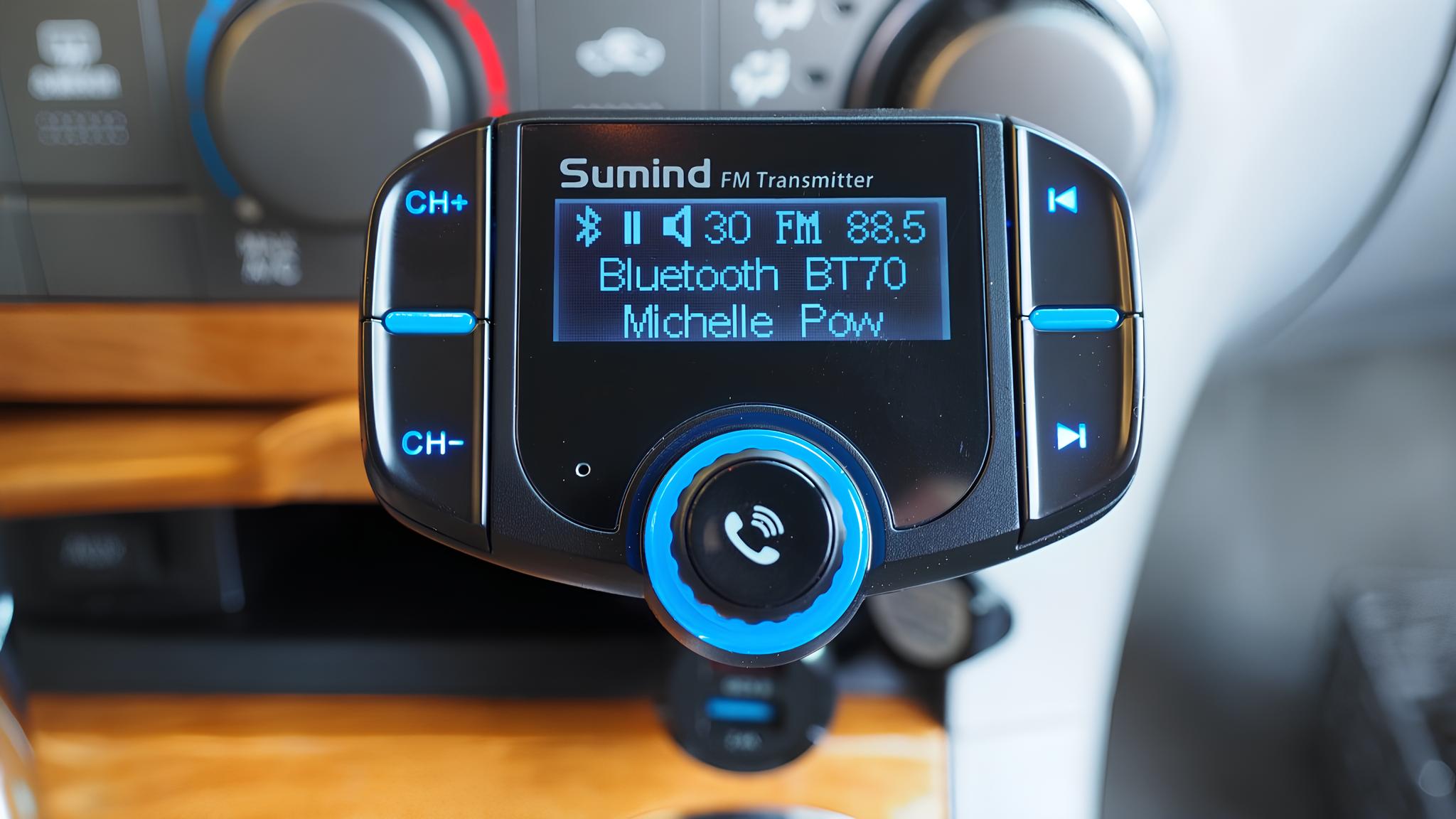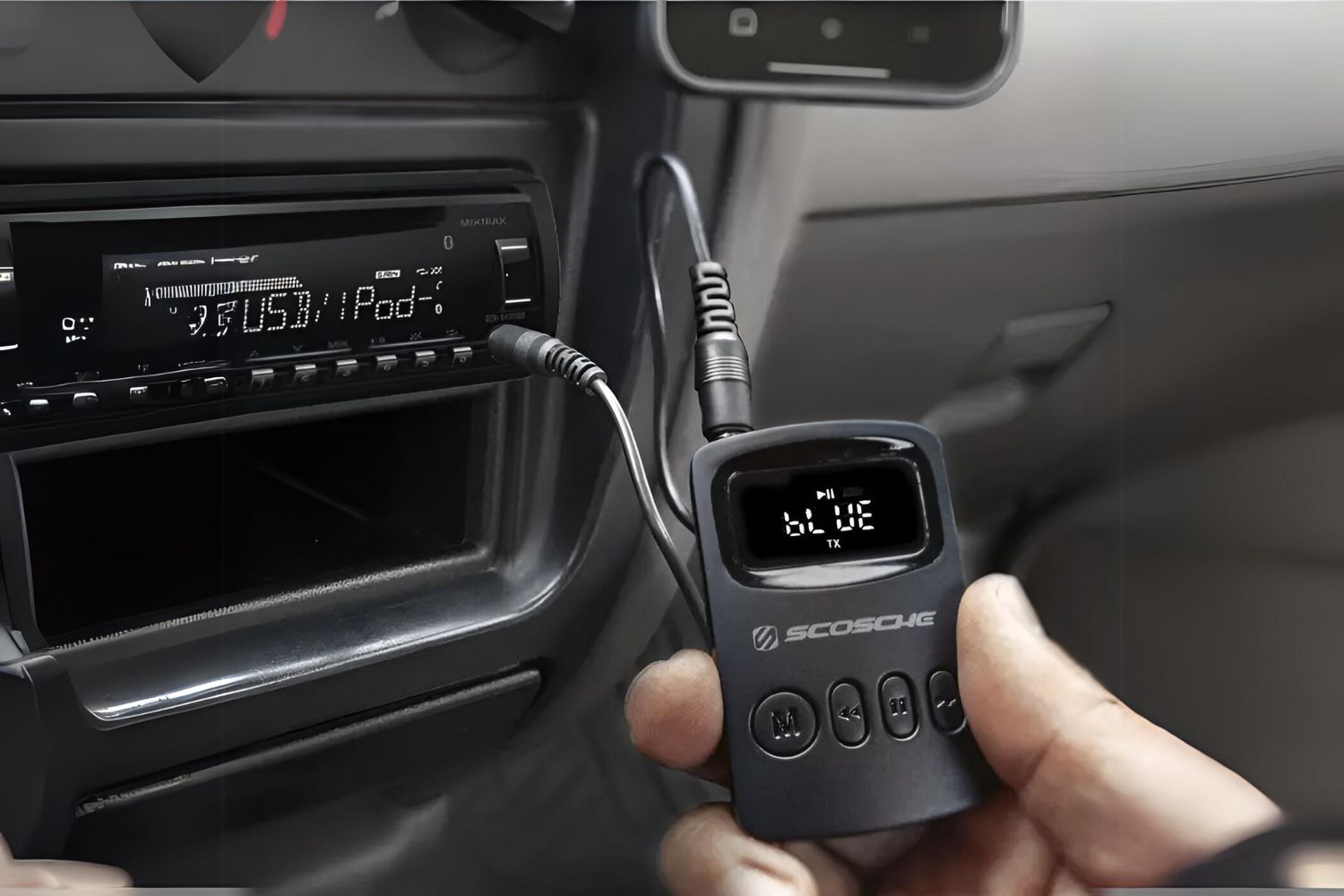Introduction
FM transmitters have become an indispensable tool for broadcasting audio content in a variety of settings. Whether you are a small-scale radio enthusiast, a fitness instructor looking to amplify your voice during outdoor workouts, or an event organizer seeking to provide attendees with a seamless audio experience, FM transmitters offer a flexible and efficient solution. These devices allow you to transmit audio signals to nearby FM radios, providing a convenient way to reach your audience without the constraints of traditional wired connections.
In this comprehensive guide, we will delve into the intricacies of FM transmitters, from understanding their fundamental principles to optimizing their performance. By the end of this journey, you will gain valuable insights into selecting the right FM transmitter for your specific needs, setting it up effectively, and troubleshooting common issues that may arise.
Whether you are a novice exploring the world of FM transmitters for the first time or an experienced user seeking to enhance your knowledge, this guide is designed to equip you with the essential know-how to make the most of this powerful technology. So, let's embark on this enlightening exploration of FM transmitters and unlock the full potential of this remarkable audio broadcasting tool.
Understanding FM Transmitters
FM transmitters are electronic devices designed to broadcast audio signals over the FM radio frequency. They serve as a bridge between audio sources, such as microphones, music players, or other audio output devices, and FM radios, enabling wireless transmission of audio content. Understanding the key components and operational principles of FM transmitters is essential for harnessing their capabilities effectively.
Operational Principle
At the heart of every FM transmitter lies a crucial component known as the oscillator, which generates the carrier frequency that carries the audio signal. This carrier frequency, typically within the FM radio band (87.5 to 108.0 MHz), serves as the medium through which the audio content is transmitted. The audio signal is then modulated onto this carrier frequency, creating variations in the frequency that correspond to the original audio waveform.
Frequency Modulation
FM transmitters employ frequency modulation (FM) as the method of encoding the audio signal onto the carrier wave. Unlike amplitude modulation (AM), which varies the amplitude of the carrier wave, FM alters the frequency of the carrier wave in response to the audio signal. This modulation technique results in a more resilient transmission that is less susceptible to noise and interference, making FM transmitters a preferred choice for high-fidelity audio broadcasting.
Power Output and Range
The effective range of an FM transmitter is influenced by its power output, antenna design, and environmental factors. Higher power output generally translates to an extended transmission range, allowing the signal to reach a larger area. However, regulatory constraints dictate the maximum permissible power output for FM transmitters to prevent interference with other radio communications.
Legal Considerations
It is imperative to adhere to legal regulations governing the operation of FM transmitters, as unauthorized and unlicensed broadcasting can lead to severe penalties. Different jurisdictions impose specific restrictions on the power output, frequency allocation, and licensing requirements for FM transmitters, emphasizing the importance of compliance to avoid legal repercussions.
Applications
FM transmitters find diverse applications in various domains, including community radio stations, language interpretation services, outdoor events, drive-in theaters, and personal broadcasting. Their versatility and ease of use make them indispensable for delivering audio content to a widespread audience, making them a popular choice in both professional and recreational settings.
By grasping the fundamental principles and functionalities of FM transmitters, users can harness their potential to facilitate seamless audio transmission and reach their intended audience effectively. This foundational understanding sets the stage for exploring the intricacies of selecting, setting up, and optimizing FM transmitters for specific applications.
Choosing the Right FM Transmitter
Selecting the right FM transmitter is pivotal for ensuring optimal performance and compatibility with your intended application. With a myriad of options available in the market, making an informed choice involves considering several key factors that align with your specific broadcasting needs.
Transmission Range
The transmission range of an FM transmitter is a critical consideration, particularly if you intend to reach a sizable audience or cover a large area. Assessing the range requirements based on the intended usage scenario, such as broadcasting within a confined space or transmitting over an expansive outdoor venue, is essential. Additionally, understanding the relationship between transmission range, power output, and antenna design enables you to make an informed decision that aligns with your coverage objectives.
Frequency Stability
Opting for an FM transmitter with robust frequency stability is imperative for maintaining consistent and reliable signal transmission. Variations in frequency stability can impact the clarity and fidelity of the transmitted audio, making it crucial to prioritize devices equipped with high-quality oscillators and frequency control mechanisms. This ensures that the transmitted signal remains steadfast, minimizing the risk of signal drift or interference that could compromise the listening experience.
Power Output
The power output of an FM transmitter directly influences its transmission range and signal strength. Balancing the power output with regulatory restrictions and environmental considerations is pivotal for compliance and effective operation. Understanding the permissible power limits within your jurisdiction and aligning them with your coverage requirements enables you to select an FM transmitter that delivers the desired reach without exceeding legal constraints.
Compatibility and Connectivity
Assessing the compatibility of an FM transmitter with your audio sources, such as microphones, music players, or mixing consoles, is essential for seamless integration into your existing setup. Furthermore, evaluating the connectivity options, including input interfaces and wireless connectivity features, allows you to determine the suitability of the transmitter for your specific audio input requirements. This ensures a hassle-free connection and optimal utilization of the transmitter in conjunction with your audio devices.
Regulatory Compliance
Adhering to regulatory guidelines and licensing requirements is paramount when choosing an FM transmitter. Ensuring that the selected transmitter complies with the designated frequency allocations, power output limitations, and licensing prerequisites is essential for lawful and interference-free operation. Prioritizing transmitters from reputable manufacturers with a track record of compliance facilitates peace of mind and mitigates the risk of potential legal implications.
By carefully evaluating these factors and aligning them with your broadcasting needs, you can confidently select an FM transmitter that harmonizes with your specific requirements, enabling you to embark on a seamless and effective audio broadcasting journey.
Setting Up Your FM Transmitter
Setting up your FM transmitter is a crucial step that lays the foundation for seamless audio broadcasting. By following a systematic approach and paying attention to key considerations, you can optimize the performance of your transmitter and ensure reliable signal transmission. Here's a detailed guide to assist you in setting up your FM transmitter effectively.
Location and Antenna Placement
Selecting an optimal location for your FM transmitter is essential for maximizing signal coverage and minimizing potential interference. Choose a site that is elevated and free from obstructions, allowing the transmitted signal to propagate efficiently. Additionally, the placement of the antenna plays a pivotal role in signal distribution. Position the antenna in a vertical orientation and ensure it is clear of any surrounding metal objects or electronic devices that could impede signal transmission.
Power Connection and Supply
Before powering up your FM transmitter, verify that the voltage supply aligns with the manufacturer's specifications. Utilize a stable power source to prevent voltage fluctuations that could compromise the transmitter's performance. Connecting the transmitter to a dedicated power outlet with surge protection safeguards it against electrical irregularities and enhances operational stability.
Audio Source Integration
Integrating your audio sources, such as microphones or music players, with the FM transmitter demands careful attention to connectivity and signal levels. Ensure that the audio input interfaces are compatible with your sources, and adjust the input levels to maintain optimal audio clarity without distortion. Additionally, consider utilizing balanced audio connections to mitigate potential noise interference and maintain signal integrity.
Frequency Selection and Calibration
Selecting an appropriate frequency for your FM transmitter involves identifying an unoccupied FM band within your locality to avoid interference with existing radio stations. Once the frequency is chosen, calibrate the transmitter to operate on the selected frequency with precision. Adhering to the designated frequency allocation and employing frequency calibration techniques, such as using a spectrum analyzer or dedicated tuning tools, ensures accurate transmission and compliance with regulatory standards.
Testing and Signal Monitoring
After the initial setup, conduct comprehensive testing to evaluate the transmitted signal's quality and coverage. Utilize FM radios positioned at various locations within the intended coverage area to assess signal strength and clarity. Monitor the transmitted audio for any anomalies and make fine adjustments to the transmitter's settings as needed to achieve optimal audio fidelity and coverage consistency.
By meticulously following these steps and paying meticulous attention to detail during the setup process, you can establish a robust and reliable foundation for your FM transmitter. This meticulous approach sets the stage for harnessing the full potential of your transmitter and delivering high-quality audio content to your audience with confidence.
Maximizing the Range of Your FM Transmitter
Maximizing the transmission range of an FM transmitter is a pivotal objective for ensuring widespread coverage and reaching a larger audience. By implementing strategic measures and optimizing key parameters, you can enhance the reach and effectiveness of your FM broadcasting. Here's a comprehensive exploration of techniques to maximize the range of your FM transmitter.
Antenna Considerations
The antenna serves as a critical component in determining the transmission range of an FM transmitter. Utilizing a high-gain antenna, such as a Yagi or log-periodic antenna, can significantly enhance the signal propagation and extend the coverage area. Additionally, positioning the antenna at an elevated location, free from obstructions and interference sources, augments the transmitter's reach by allowing the signal to propagate unimpeded. Careful consideration of antenna design, orientation, and placement is instrumental in maximizing the transmission range.
Power Output Optimization
Balancing the power output of the FM transmitter with regulatory constraints and coverage requirements is essential for maximizing range without exceeding legal limitations. Leveraging the permissible power output to the fullest extent ensures a robust signal that penetrates obstacles and reaches distant listeners. However, it is imperative to adhere to the designated power thresholds to prevent interference with other radio communications and comply with regulatory standards.
Environmental Factors
Understanding and mitigating environmental factors that can impede signal propagation is crucial for maximizing the transmission range. Factors such as terrain topology, atmospheric conditions, and electromagnetic interference from surrounding structures can influence the effective coverage of the FM transmitter. By conducting a thorough assessment of the environmental landscape and implementing mitigation strategies, such as adjusting the transmitter's location or employing signal amplification techniques, you can counteract environmental impediments and optimize the transmission range.
Frequency Selection and Bandwidth Management
Selecting an optimal frequency for transmission and managing the bandwidth effectively contributes to maximizing the range of the FM transmitter. Identifying a clear frequency within the FM radio band that is devoid of interference from existing radio stations is pivotal for unobstructed signal propagation. Additionally, managing the bandwidth to minimize signal distortion and spectral splatter ensures efficient utilization of the allocated frequency spectrum, enhancing the transmitter's reach and coverage consistency.
By implementing these strategic measures and fine-tuning the operational parameters of the FM transmitter, you can effectively maximize its transmission range, enabling you to deliver high-quality audio content to a wider audience and create an immersive listening experience.
Troubleshooting Common Issues with FM Transmitters
FM transmitters, like any electronic device, may encounter common issues that can impede their performance. Identifying and addressing these issues is essential for maintaining reliable and consistent audio broadcasting. Here's an in-depth exploration of common problems associated with FM transmitters and effective troubleshooting strategies to mitigate them.
Signal Interference and Distortion
Interference and distortion in the transmitted signal can manifest as static, noise, or audio artifacts, compromising the listening experience. To address this issue, first, ensure that the transmitter is operating on a clear and unoccupied frequency within the designated FM band. Additionally, optimizing the antenna placement and orientation can minimize signal interference from surrounding electronic devices and structures. Conducting a comprehensive assessment of the transmission environment and mitigating sources of electromagnetic interference can significantly alleviate signal distortion.
Limited Transmission Range
A limited transmission range may stem from factors such as suboptimal antenna placement, power output inadequacy, or environmental obstructions. To troubleshoot this issue, reposition the antenna to an elevated and unobstructed location to enhance signal propagation. Additionally, fine-tune the power output within permissible limits to maximize the transmitter's reach without exceeding regulatory constraints. Mitigating environmental impediments, such as terrain topology or atmospheric conditions, can further extend the transmission range.
Audio Quality Degradation
Degraded audio quality, characterized by muffled or distorted sound, can arise from improper audio source integration or suboptimal frequency calibration. Verify the compatibility and signal levels of the audio sources connected to the transmitter, ensuring balanced audio connections to minimize noise interference. Calibrate the transmitter's frequency with precision using dedicated tuning tools to maintain accurate audio reproduction. Conducting thorough testing with FM radios across the coverage area allows for real-time assessment and fine adjustments to optimize audio quality.
Regulatory Compliance Issues
Non-compliance with regulatory guidelines, including frequency allocations and power output limitations, can lead to legal repercussions and interference with other radio communications. To address this, familiarize yourself with the specific regulations governing FM transmission in your locality and ensure strict adherence to the prescribed frequency allocations and power output constraints. Acquiring the necessary licenses, where applicable, and staying informed about regulatory updates is crucial for maintaining lawful and interference-free operation.
By proactively identifying and troubleshooting these common issues, users can uphold the integrity and effectiveness of their FM transmitters, ensuring seamless audio broadcasting and a superior listening experience for their audience.
Conclusion
In conclusion, FM transmitters stand as versatile tools that empower users to broadcast audio content seamlessly, catering to a diverse array of applications ranging from community radio stations to outdoor events. Understanding the operational principles, selecting the right transmitter, and optimizing its setup and performance are pivotal steps in harnessing the full potential of this technology.
By comprehending the intricacies of frequency modulation and transmission range dynamics, users can make informed decisions when choosing an FM transmitter that aligns with their coverage requirements and regulatory considerations. The selection process involves evaluating factors such as transmission range, frequency stability, power output, and regulatory compliance, culminating in the acquisition of a transmitter that harmonizes with specific broadcasting needs.
Setting up an FM transmitter demands meticulous attention to detail, encompassing considerations such as antenna placement, power connection, audio source integration, and frequency calibration. By adhering to best practices during the setup phase, users can establish a robust foundation for reliable signal transmission and seamless integration with their audio sources.
Maximizing the transmission range of an FM transmitter involves strategic measures such as optimizing antenna design, power output, environmental considerations, and frequency management. By implementing these techniques, users can extend the reach of their broadcasts, ensuring widespread coverage and an immersive listening experience for their audience.
Furthermore, troubleshooting common issues, including signal interference, limited transmission range, audio quality degradation, and regulatory compliance, is essential for maintaining the integrity and effectiveness of FM transmitters. By addressing these challenges proactively, users can mitigate performance issues and uphold the quality of their audio broadcasts.
In essence, this comprehensive guide equips users with the knowledge and strategies to leverage FM transmitters effectively, enabling them to deliver high-quality audio content to their intended audience with confidence and precision. Whether it's enriching the airwaves with captivating music, amplifying instructional guidance during outdoor activities, or facilitating seamless event communication, FM transmitters serve as indispensable tools for fostering connectivity and engagement through the power of wireless audio transmission.







